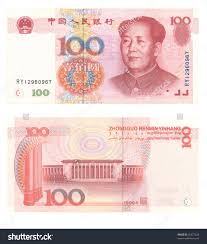But Yuan money supply growth slows
Chinese banks extended 985.5 billion yuan ($149.56 billion) in new yuan loans in May, exceeding analysts’ expectations and well above the previous month’s levels, as the central bank keeps policy accommodating to support the slowing economy.
The central bank has pledged to keep policy slightly loose to support activity, even after an article in the People’s Daily in May quoted an “authoritative person” as warning that China may suffer a financial crisis or recession if the government relies too much on debt-fueled stimulus.
But a drop in credit linked to shadow financing raised concerns among analysts that the economy may suffer as Chinese regulators step up efforts to rein in riskier forms of debt.
Economists polled by Reuters had expected new loans would climb to 750 billion yuan last month, from a six-month low of 556 billion yuan in April.
Total social financing (TSF), a broader measure of credit and liquidity in the economy, fell to 659.9 billion yuan in May from 751 billion yuan in April, dragged by a dip in bankers’ acceptances, corporate bond issuance and fewer trust loans, the central bank said on Wednesday.
Both trust loans and acceptances are widely used in shadow financing activity.
“Bank lending beat expectations but the drop in total social financing shows regulators are trying to push for deleveraging,” said Nie Wen, an economist at Hwabao Trust in Shanghai.
“Economic growth may slow into the second half,” he said, predicting second-quarter growth of 6.7 percent, the same as in the first quarter which was the weakest since the global financial crisis.
Broad M2 money supply (M2) grew 11.8 percent from a year earlier, down from April’s 12.8 percent. Analysts had expected May growth of 12.5 percent.
Central bank officials have predicted a gradual slowdown in M2 growth due to huge liquidity injections which were made after a stock market crash last summer to prevent a financial shock.
Outstanding yuan loans grew 14.4 percent by month-end on an annual basis, versus expectations of 14.2 percent.
Banks doled out a record 4.6 trillion yuan in new loans in first quarter, but levels in April were much lower than expected, adding to fears that Beijing was taking a more cautious approach on stimulus.
Most analysts see limited room for the PBOC to loosen policy further, especially amid expectations that the Federal Reserve could raise interest rates for the second time since December, increasing downward pressure on the yuan.


